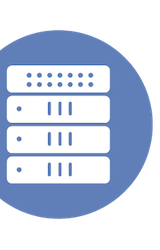Tech Field Day Coverage
Our delegate panel includes independent writers and thought leaders, and we collect their coverage of the event, Tech Field Day presentations, and sponsoring companies here.
VMAX All Flash: Enterprise reliability and SRDF at <1ms latency
Jon Klaus gives an overview of Dell EMC’s all flash VMAX storage array, which he saw at Storage Field Day earlier this year. This brings sub 1ms latency and high IOPS to the already reliable line.
Read More:
VMAX All Flash: Enterprise reliability and SRDF at <1ms latency
NETSCOUT LinkRunner G2; Part 1, Nuts and Bolts
Mitch Dickey is no stranger to NETSCOUT, having seen them at Mobility Field Day earlier this year. In this post, he digs into their latest network analysis tool, the LinkRunner G2. A stablemate to the AirCheck G2, the Linkrunner features a full Android OS to provide a variety of hardware and software analysis tools for modern networks.
Read More:
NETSCOUT LinkRunner G2; Part 1, Nuts and Bolts
How to quickly deploy Riverbed’s Xirrus wireless solution
Brandon Carroll reviews how to get up and running quickly with Riverbed’s Xirrus solution. This is a cloud-based wireless system, which impressed Brandon with its overall ease of use. He walks through creating a network, as well as adding and configuring access points.
Read More:
How to quickly deploy Riverbed's Xirrus wireless solution
Cloud Field Day2: Hacking the Cloud with HPE Nimble Cloud Volumes
Lino Telera got a look at what HPE is doing post-acquisition with Nimble Storage at Cloud Field Day earlier this year. From this, Lino looks at HPE Nimble Cloud Volumes, which provides the ability to “share” storage resources across cloud providers. He saw this as an important piece for any organization looking to embrace a hybrid cloud deployment.
Read More:
Cloud Field Day2: Hacking the Cloud with HPE Nimble Cloud Volumes
Network Visibility with Barefoot Deep Insight
The speed of multi-gigabit networks has largely outpaced the legacy monitoring tools traditionally used by network engineers. Tom Hollingsworth outlines how Barefoot Networks uses their programmable Tofino chipset and the P4 language to provide modern monitoring using their Barefoot Deep Insight solution.
Read More:
Network Visibility with Barefoot Deep Insight
Unmasking Bad Actors with Gigamon
After seeing their presentation from Networking Field Day earlier this year, Tom Hollingsworth reviews Gigamon’s solutions for giving visibility back to your network. They do this via SSL Decryption, which can detect anomalies from a variety of sources. Tom also addresses potential privacy concerns of this approach in the piece.
Read More:
Unmasking Bad Actors with Gigamon
Keep Load Balanced With KEMP Technologies
Pete Welcher wasn’t familiar with KEMP Technologies prior to their presentation at Networking Field Day earlier this year. But after hearing their presentation, he found them to have some interesting ideas with an impressive portfolio of server load balancer solutions. He summerizes some of the notable features, and how using their SLB might provide a more consistent experience with hybrid deployments.
Read More:
Keep Load Balanced With KEMP Technologies
Cloudian Announces HyperFile, Makes Object Better
If you’re interested in 840TB of object storage in 4RU with strict S3 compliance, than Cloudian’s new HyperStore 4000 appliance might be for you. Dan Frith got a look at it at Storage Field Day last month. He found the addition of “converged access” makes it interesting for anyone that needs support for file and object storage in the data center.
Read More:
Cloudian Announces HyperFile, Makes Object Better
Four Platforms When One Will Do?
After getting a review of their mid-range storage offerings at Storage Field Day last month, Chris Evans tries to makes sense of Dell EMC’s portfolio. This includes the SC-series, Unity, VNX and EqualLogic. The last two will be phased out as the result of the Dell EMC merger. Chris breaks down the rationale behind keeping two distinct mid-range lines, highlighting major differentiation like file protocols and deduplication support.
Read More:
Four Platforms When One Will Do?
Running towards G2
Blake Krone got a good look at NETSCOUT’s AirCheck G2 at Mobility Field Day earlier this year. Now he’s taking a look at the company’s LinkRunner G2, a similar tool with a focus on wired network troubleshooting. One of the notable features, it includes a complete Android install on the device, meaning you can install apps to future extend its functionality.
Read More:
What, no MFD this season? Where to get your Wireless info in 2018
Recent consolidation among wireless companies can leave some people wondering how to stay on top of important news. Drew Lentz put together a list of industry events to help his fellow Mobility Field Day fans stay on top of the industry.
Read More:
What, no MFD this season? Where to get your Wireless info in 2018
Storage Field Day 14
If you missed last month’s Storage Field Day, Barry Coombs has a post to get you caught up on most of the presentations. He includes his morning videos recorded at the event, going over his thoughts on what he saw the day prior. He also includes his excellent doodles for each presentations. These include notes on each company, as well as photos and screen shots. For a full audio-visual catch up on Storage Field Day, Barry has you covered.
Read More:
NETSCOUT Rounds Out the G2 Line With Latest LinkRunner
Lee Badman shares his thoughts on the latest G2 lineup from NETSCOUT. This includes the AirCheck G2 which he saw at Mobility Field Day. Recently, he got to try out the LinkRunner G2 and Lee found he an invaluable tool for wiring environments and Ethernet switch networks.
Read More:
NETSCOUT Rounds Out the G2 Line With Latest LinkRunner
vMax to the Max
Dell EMC went into a technical deep dive on VMAX during their presentation at Storage Field Day earlier this year. Erik Ableson looks at their recently released all-flash VMAX, and considers the current state of “big iron” and how something like VMAX fits into the world of the modern storage admin.
Read More:
54: GreyBeards talk scale-out secondary storage with Jonathan Howard, Dir. Tech. Alliances at Commvault
Ray Lucchesi and Howard Marks talked to Jonathan Howard on the most recent GreyBeards on Storage podcast. Jonathan is the Director of Technical Alliances at Commvault, and they discuss the company’s move into the secondary storage market with Hyperscale, and how that combines with their data management solutions.
Read More:
ActualTech Debrief: Commvault HyperScale
Scott D. Lowe shares his debrief from Commvault GO, highlighting their new HyperScale secondary storage solution.
Read More:
ActualTech Debrief: Commvault HyperScale
Is NetApp Becoming A Service Provider?
In this post, Chris Evans makes the argument that NetApp has fundamentally changed as a company, from a single product and platform to full on data management. As an example, he points to their Cloud Orchestrator service.
Read More:
Is NetApp Becoming A Service Provider?
Dedicated Wireless Troubleshooting Doesn’t Have To Break The Bank
Tom Hollingsworth takes a look at Mojo Networks’ unique approach to wireless analytics in this piece. This is achieved by adding a third radio to each AP to assist with monitoring and analytics. Tom thinks this is an ideal solution to get an ear on traffic without interfering with peak speeds.
Read More:
Dedicated Wireless Troubleshooting Doesn't Have To Break The Bank
E8 Storage: The Mercedes-Maybach 6 of NVMe Flash Arrays
Max Mortillaro heard from E8 Storage at Storage Field Day last month. In his blog post, he’s pretty clear: (f)rom a performance perspective, E8 Storage will just blow your mind away. Their radical approach to storage proved very exciting for Max, and he sees their solution as ideal for Tier-0 applications requiring high throughput, high IOPS and low latency.
Read More:
E8 Storage: The Mercedes-Maybach 6 of NVMe Flash Arrays
Elastifile Add More Elasticity To Their Offering
After seeing them at Storage Field Day earlier this year, Dan Frith shares his experience with recent updates from Elastifile. The company offers a Cross-cloud Data Fabric to solve the typical data management problems of hybrid-cloud deployments. Dan found the solution flexible, with notable features like encryption at rest coming soon.
Read More:







